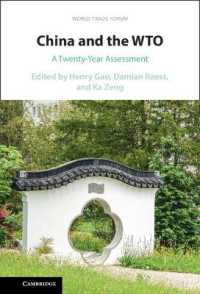- ホーム
- > 洋書
- > 英文書
- > Literary Criticism
Full Description
Samuel Richardson's Pamela (1740) is often regarded as the first true novel in English and a landmark in literary history. The best-selling novel of its time, it provoked a swarm of responses: panegyrics and critiques, parodies and burlesques, piracies and sequels, comedies and operas. The controversy it inspired has become a standard point of reference in studies of the rise of the novel, the history of the book and the emergence of consumer culture. In the first book-length study of the Pamela controversy since 1960, Thomas Keymer and Peter Sabor offer a definitive account of the novel's enormous cultural impact. Above all, they read the controversy as a market phenomenon, in which the writers and publishers involved were competing not only in struggles of interpretation and meaning but also in the larger and more pressing enterprise of selling print.
Contents
Introduction; 1. 'The selling part': publication, promotion, profits; 2. Literary property and the trade in continuations; 3. Counter-fictions and novel production; 4. Domestic servitude and the licensed stage; 5. Pamela illustrations and the visual culture of the novel; 6. Commercial morality, colonial nationalism, and Pamela's Irish reception; Afterword; Appendix. A chronology of publications, performances and related events to 1750; Select bibliography; Index.








